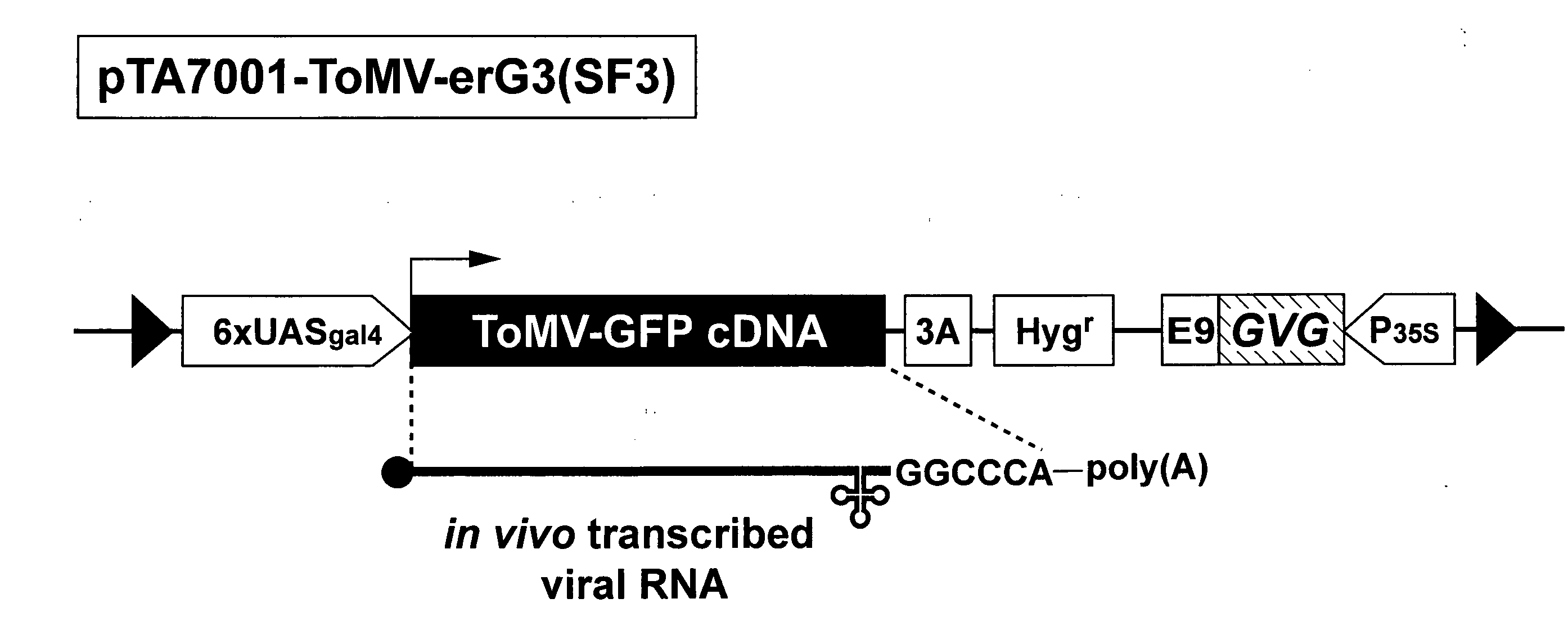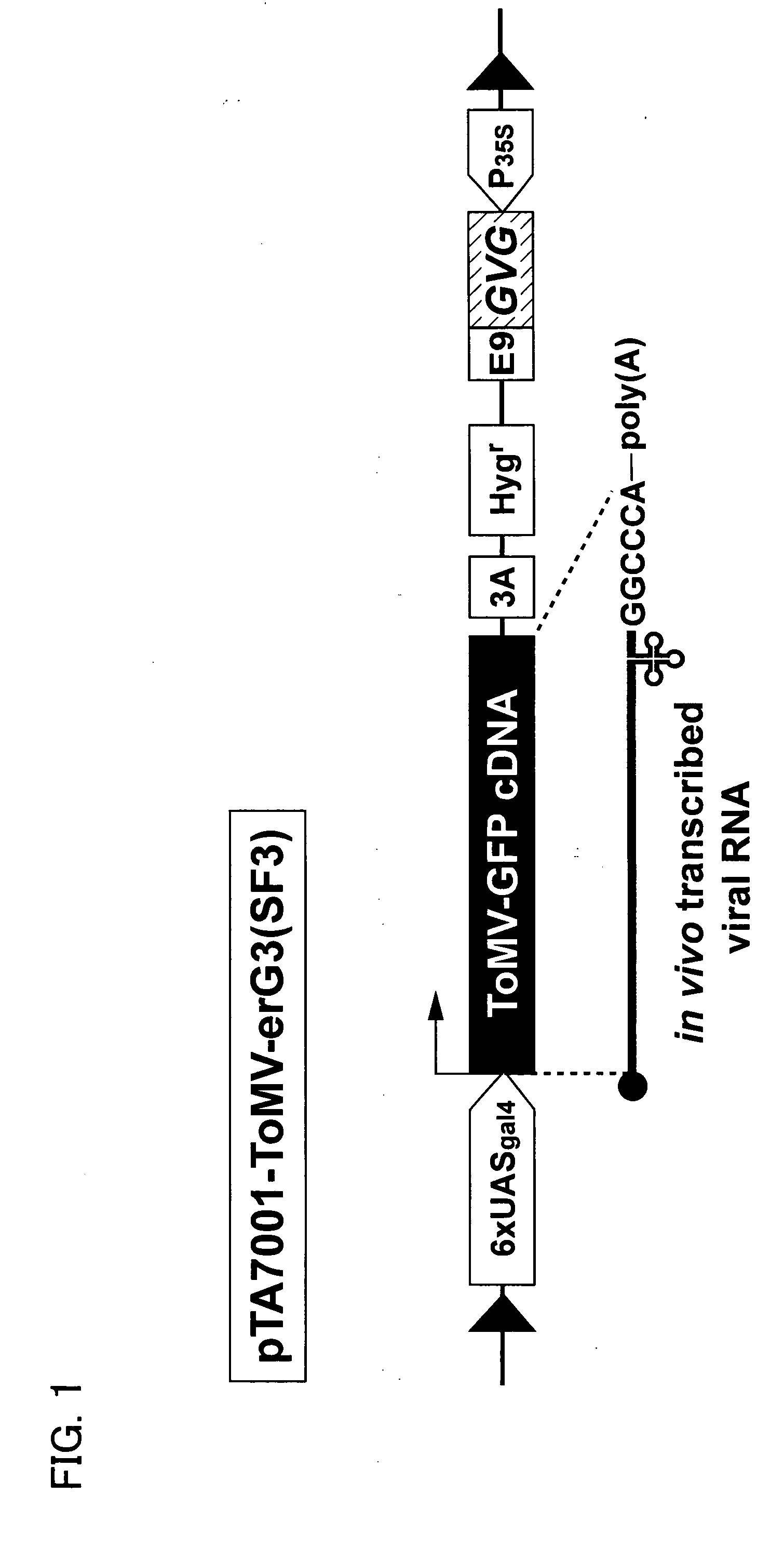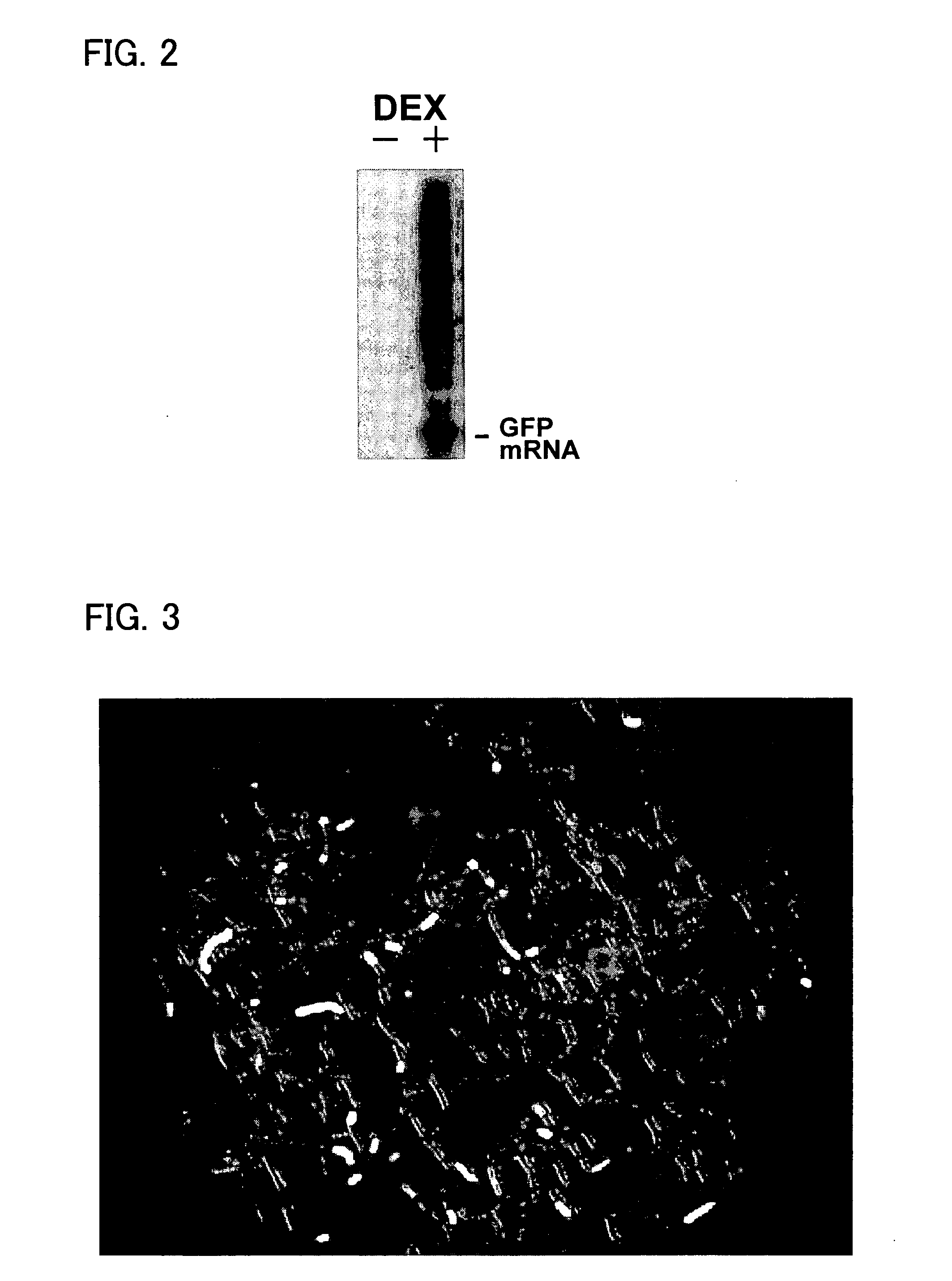DNA Fragment Method for Producing Transformant for Protein Production and Utilization Thereof
a technology of transformant and fragment, applied in the field of transformed cells, can solve the problems of insatiable, varied problems in the conventional protein producing system, and various problems of plant and animal cells in protein production processes, and achieve the effects of boosting viral rna, stably and efficiently producing transcription factors, and efficiently inducing the expression of virus vectors
- Summary
- Abstract
- Description
- Claims
- Application Information
AI Technical Summary
Benefits of technology
Problems solved by technology
Method used
Image
Examples
example 1
Steroid Hormone-Induced Protein Expression in Tobacco BY-2 Cells
[0264]
[0265]As a virus vector, the ToMV variant (ToMV-erG3(SF3)) was used in which the coat protein gene has been replaced with the GFP gene. The ToMV-erG3(SF3) was kindly provided by Dr. Tetsuo MESHI of the graduate school of Kyoto University.
[0266]As a transformation vector, Ti plasmid pTA7001 (Stu) was used that includes a transcription factor (GVG), and a promoter which is induced by steroid hormone. The vector was constructed by inserting StuI site at the transcription origin of pTA7001, using PCR. Note that, pTA7001 was kindly provided by Dr. Chua (Laboratory of Plant Molecular Biology, the Rockefeller University).
[0267]Next, cDNA of ToMV-erG3(SF3) was inserted in pTA7001 (Stu), downstream of the promoter which is induced by steroid hormone, so as to construct an expression vector pTA7001-ToMV-erG3(SF3). More specifically, the vector was constructed in the following manner. First, using piL.erG3(SF3) (see Atsushi ...
example 2
Vector
[0283]In this Example, a green fluorescent protein (hereinafter “GFP”) was used as the protein to be expressed, and a vector was used that contained a ToMV vector having incorporated therein a gene that encodes GFP (hereinafter referred to as “GFP gene”). FIG. 5(A) schematizes a vector to which a ribozyme sequence of hepatitis delta virus has been added. FIG. 5(B) schematizes a vector to which a ribozyme sequence of satellite tobacco ringspot virus has been added. The ribozyme sequence (DNA sequence) used to construct the vector is represented by SEQ ID NO: 1 for the hepatitis delta virus, and by SEQ ID NO: 2 for the satellite tobacco ringspot virus. The sequence represented by SEQ ID NO: 1 was obtained by modifying the anti-genomic ribozyme sequence of a hepatitis delta virus genomic sequence (Gen Bank accession No. X77627, etc.). The sequence represented by SEQ ID NO: 2 was obtained by modifying the ribozyme sequence of a satellite tobacco ringspot virus genomic sequence (Ge...
example 3
Production of GFP-Producing Transformed Tobacco BY2 Cells
[0294][Construction of a Transcription Factor-Expressing DNA Fragment Transfer Vector]
[0295]Ti plasmid pER8 (−Stu) was used as the vector for transferring the transcription factor-expressing DNA fragment into a host cell (tobacco BY2 cell) (“transcription factor-expressing DNA fragment transfer vector”). The Ti plasmid pER8 (−Stu) is constructed to include: permanent promoter PG10-90; a gene that encodes fusion transcription factor LexA-VP16-hER containing an estrogen receptor; terminator TE9; and hygromycin-resistant gene (Hygr) provided as a drug resistant marker. FIG. 8(a) schematizes the construction of Ti plasmid pER8 (−Stu).
[0296][Construction of Protein-Expressing DNA Fragment Transfer Vector]
[0297]ToMV variant was used in which the coding gene of ToMV coat protein has been replaced with a gene that encodes GFP (hereinafter referred to as “GFP gene”). As the transformation vector, a Ti plasmid was used that includes a p...
PUM
| Property | Measurement | Unit |
|---|---|---|
| virus resistance | aaaaa | aaaaa |
| fluorescent | aaaaa | aaaaa |
| time period | aaaaa | aaaaa |
Abstract
Description
Claims
Application Information
 Login to View More
Login to View More - R&D
- Intellectual Property
- Life Sciences
- Materials
- Tech Scout
- Unparalleled Data Quality
- Higher Quality Content
- 60% Fewer Hallucinations
Browse by: Latest US Patents, China's latest patents, Technical Efficacy Thesaurus, Application Domain, Technology Topic, Popular Technical Reports.
© 2025 PatSnap. All rights reserved.Legal|Privacy policy|Modern Slavery Act Transparency Statement|Sitemap|About US| Contact US: help@patsnap.com



